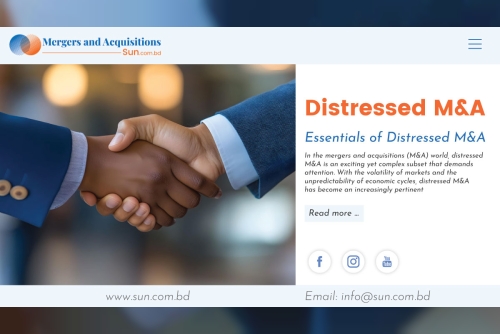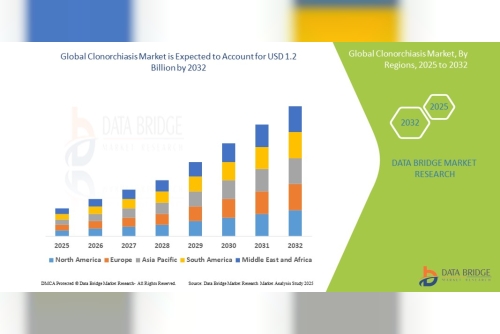In the mergers and acquisitions (M&A) world, distressed M&A is an exciting yet complex subset that demands attention. With the volatility of markets and the unpredictability of economic cycles, distressed M&A has become an increasingly pertinent topic for business professionals and investors alike. This blog post aims to demystify the essentials of distressed M&A, shedding light on the trends, opportunities, and risks involved.
We'll explore distressed M&A, why it's gaining traction, and how you can identify potential opportunities. You'll also learn about the inherent risks and how to mitigate them.
By the end, you'll have a comprehensive understanding of this dynamic field and be better equipped to make informed investment decisions.
What is Distressed M&A?Distressed mergers and acquisitions refer to the buying and selling of companies experiencing financial difficulties. These companies may be on the brink of bankruptcy or have already filed for it. Unlike traditional M&A, which focuses on growth and synergy, distressed M&A often centers on turnaround strategies and asset recovery.
Typically, distressed M&A arises in industries undergoing significant change or during economic downturns. Investors see potential in acquiring these troubled assets at low prices, hoping to unlock value through restructuring or strategic pivots. It is a high-risk, high-reward strategy that requires careful analysis and foresight.
The allure of distressed M&A lies in the potential for substantial returns. However, it is not without its challenges. Investors must be adept at navigating complex negotiations and understanding the nuances of distressed asset valuations.
Key Characteristics of Distressed M&A
Valuation Challenges: Distressed companies often have unstable financials, making it difficult to determine their true value. Buyers must carefully assess the target's assets, liabilities, and potential for recovery.
Speed of Execution: Time is often of the essence in distressed M&A deals. Financially troubled companies may have limited time to find a buyer before their situation worsens, leading to quicker deal cycles.
Legal Complexities: These deals typically involve navigating complex legal issues, including bankruptcy proceedings, creditor negotiations, and regulatory approvals.
High Stakes: While distressed M&A can offer significant rewards, the risks are equally high. A miscalculated move can result in substantial losses or even bankruptcy for the acquiring company.
The recent economic climate has accelerated the interest in distressed M&A. With the COVID-19 pandemic causing widespread financial strain, many businesses are in precarious positions. This environment creates opportunities for savvy investors willing to take calculated risks.
Distressed M&A offers a chance to acquire valuable assets at discounted prices. For example, the real estate and retail sectors have seen numerous distressed deals as companies seek to offload underperforming locations. Such transactions can lead to significant cost savings and improved operational efficiency.
Furthermore, distressed M&A allows companies to reposition themselves strategically. By acquiring struggling competitors, businesses can eliminate competition and consolidate market share. This approach can be particularly beneficial in industries facing overcapacity issues.
Distressed M&A has become a focal point for investors and companies alike, especially during economic uncertainty. The following trends are shaping the landscape of distressed:
Increased Activity Due to Economic VolatilityEconomic downturns, such as during the COVID-19 pandemic and subsequent inflationary pressures, have led to a surge in distressed M&A activity. Companies facing cash flow issues, mounting debt, or declining revenues are more likely to become targets for acquisition. This trend is expected to continue as businesses grapple with the aftereffects of global economic disruptions.
Focus on Operational TurnaroundsThere is a growing emphasis on operational turnarounds in distressed M&A. Acquirers are not just looking to strip assets or reduce costs but are increasingly focused on revitalizing the core business. This trend involves implementing new management strategies, optimizing operations, and investing in technology to return distressed companies to profitability.
Cross-Border Distressed M&AGlobalization and the interconnected nature of markets have led to an increase in cross-border distressed M&A. Companies in emerging markets or regions experiencing economic crises are particularly attractive targets for international buyers looking to expand their global footprint. This trend highlights the importance of understanding and navigating diverse regulatory environments and cultural differences.
Top 10 Challenges in Distressed M&A and How to Overcome Them
Valuation UncertaintyChallenge: Determining the actual value of a distressed asset can be complex due to fluctuating financials and market conditions.
Solution: Employ thorough due diligence, including forensic accounting and market analysis, to arrive at a more accurate valuation.
Speed of ExecutionChallenge: Distressed M&A deals often must be completed quickly to prevent further deterioration of the target's value.
Solution: Assemble a dedicated team with a streamlined decision-making process to expedite the transaction.
Limited Information AvailabilityChallenge: Financial records of distressed companies may be incomplete or unreliable.
Solution: Use data analytics and hire specialized consultants to solve the financial puzzle.
Regulatory and Legal ComplexitiesChallenge: Navigating bankruptcy laws, creditor rights, and other legal hurdles can complicate the transaction.
Solution: Engage legal experts familiar with distressed transactions to guide you.
Stakeholder ManagementChallenge: Balancing the interests of various stakeholders, including creditors, employees, and shareholders, can be difficult.
Solution: Open and transparent communication and fair negotiation can help align stakeholder interests.
Financing the DealChallenge: Securing financing for a distressed M&A deal can be tough due to the perceived risks.
Solution: Explore alternative financing options, such as asset-based lending or private equity, and present a solid recovery plan to lenders.
Post-Merger IntegrationChallenge: Integrating the distressed company post-acquisition, especially when limited resources can be overwhelming.
Solution: Prioritize key integration areas, allocate resources efficiently, and monitor progress closely to ensure a smooth transition.
The Future of Distressed M&AThe future of distressed M&A holds both promise and uncertainty. As markets continue to evolve, new opportunities and challenges will emerge. Investors must remain vigilant and adaptable to capitalize on these trends.
Technological advancements, such as AI and data analytics, are expected to play a significant role in shaping the future of distressed M&A. These tools can enhance due diligence processes and provide deeper insights into potential deals.
Economic recovery and stabilization will also influence the landscape of distressed M&A. While some industries may rebound quickly, others may face prolonged challenges, creating opportunities for strategic acquisitions.
The Role of M&A Attorneys in Complex Distressed M&A Deals
In the world of mergers and acquisitions (M&A), distressed deals present unique challenges that require specialized legal expertise.
M&A attorneys play a crucial role in navigating the complexities of these transactions. They ensure that their clients' interests are protected while managing the risks associated with financially troubled companies.
1. Strategic Assessment and Risk MitigationOne of the primary responsibilities of an M&A attorney in a distressed deal is to conduct a thorough due diligence process. This involves assessing the target company's financial health, identifying potential liabilities, and understanding the legal implications of acquiring a distressed asset.
Attorneys work closely with financial advisors to evaluate the risks and opportunities, helping clients make informed decisions.
2. Structuring the TransactionDistressed M&A deals often require creative structuring to maximize value and minimize liability exposure. M&A attorneys are instrumental in designing transaction structures that balance the interests of both the buyer and the seller.
This might include negotiating asset purchases rather than stock acquisitions, which can help the buyer avoid inheriting unwanted liabilities.
3. Navigating Bankruptcy and Insolvency LawsIn many distressed M&A transactions, the target company may be involved in bankruptcy or insolvency proceedings. M&A attorneys must navigate the complexities of bankruptcy law, ensuring that the transaction complies with legal requirements and that their client's position is protected.
This might involve negotiating with creditors, obtaining court approvals, and providing a fair and transparent sale process.
4. Negotiation and DocumentationGiven the inherent risks in distressed M&A deals, the negotiation process is often intense. M&A attorneys play a crucial role in negotiating the terms of the agreement, including purchase price, representations and warranties, indemnities, and conditions precedent.
They also draft and review the necessary legal documents, ensuring that all contracts are enforceable and protect their client's interests.
5. Closing the Deal and Post-Transaction IntegrationOnce the deal is negotiated, M&A attorneys oversee the closing process, ensuring that all legal requirements are met and the transaction is completed smoothly. After the deal is closed, they may assist with post-transaction integration, helping the acquiring company manage any remaining legal issues, such as employment matters, regulatory compliance, and disputes with creditors or stakeholders.
ConclusionDistressed M&A is a high-stakes arena that offers investors and business professionals substantial opportunities. By understanding the intricacies of this field and employing effective risk management strategies, you can unlock value and drive growth.
Whether you're a seasoned investor or exploring distressed M&A for the first time, the insights and strategies shared in this blog post can serve as a valuable guide. Stay informed, stay adaptable, and seize the opportunities that distressed M&A presents.
Consider contacting industry experts or attending relevant conferences and webinars for further exploration. By staying engaged and informed, you can position yourself for success in the dynamic world of distressed M&A.
Frequently Asked QuestionsHow does due diligence differ in distressed M&A transactions?
Due diligence in distressed M&A is more intensive and focused on identifying potential liabilities, understanding the target's financial situation, and assessing the risks involved. It often involves a deep dive into the target company's financials, contracts, and legal obligations to understand and mitigate all potential risks.
What is the role of an M&A attorney in a distressed deal?
An M&A attorney is essential in a distressed M&A deal. They provide legal advice, conduct due diligence, structure the transaction, negotiate terms, and ensure compliance with bankruptcy and insolvency laws. Their expertise helps mitigate risks and protect the interests of their clients throughout the transaction.
Can a distressed M&A deal be reversed or undone after closing?
While distressed M&A deals are generally final once completed, exceptions exist. Legal remedies might be available if significant undisclosed liabilities or fraud are discovered post-closing. However, reversing a deal is complex and requires legal solid grounds and evidence.
What types of buyers are typically interested in distressed M&A deals?
Buyers interested in distressed M&A deals include turnaround specialists, private equity firms, strategic buyers looking for synergies, and investors seeking to acquire undervalued assets. These buyers often have experience managing distressed assets or have the resources to turn around a struggling business.
https://www.sun.com.bd/blog/ma/the-essentials-of-distressed-ma-trends-opportunities-and-risks/












